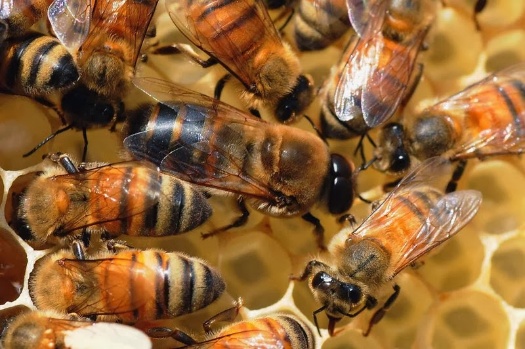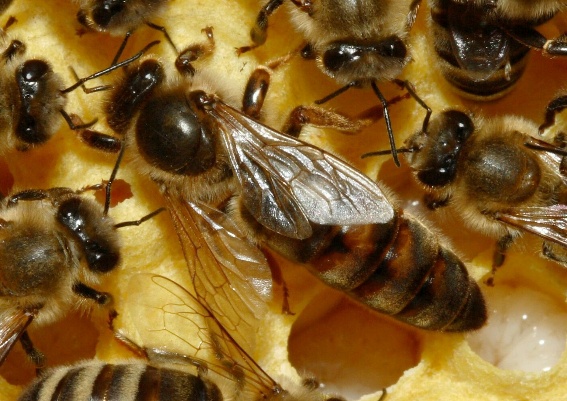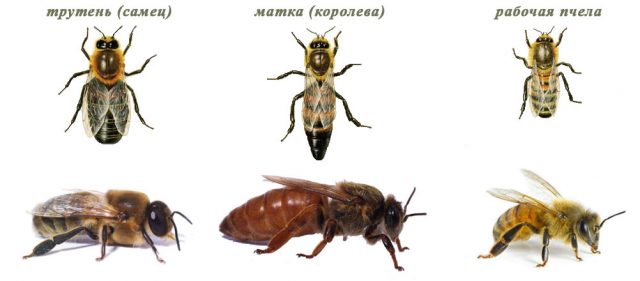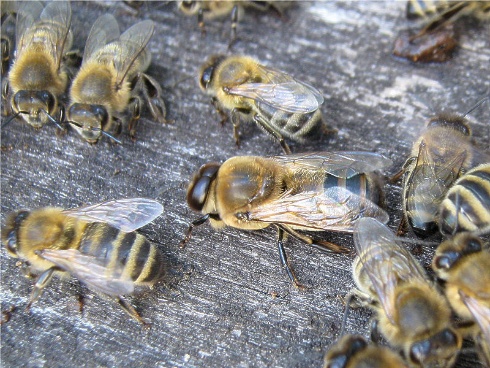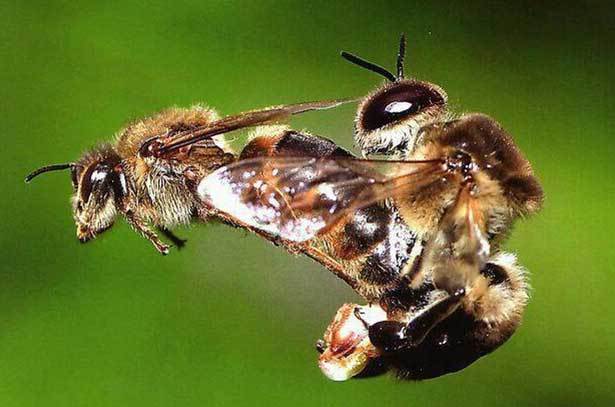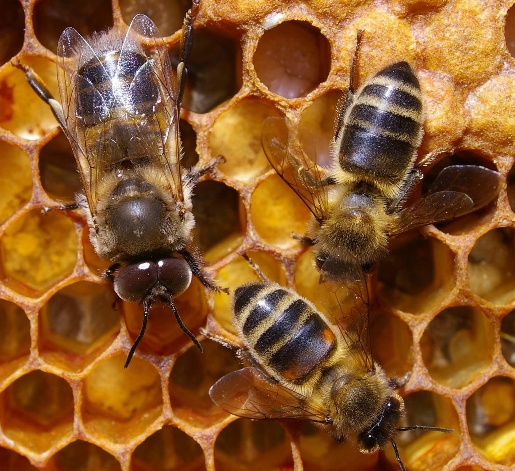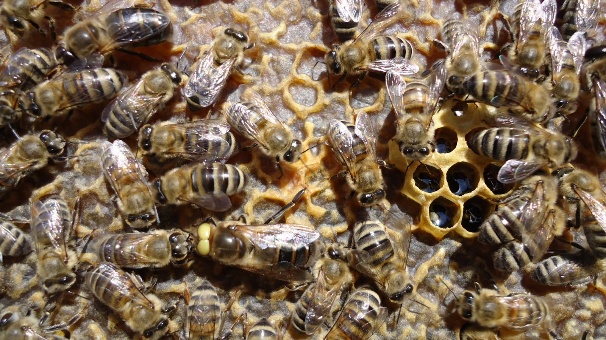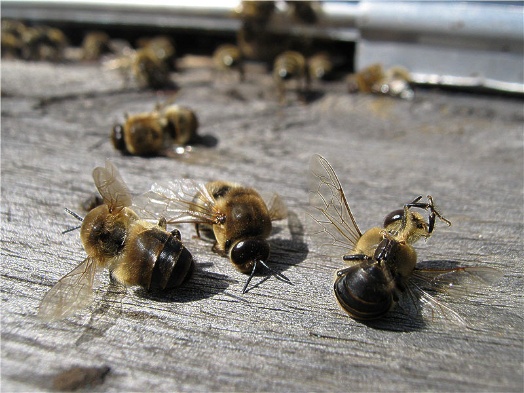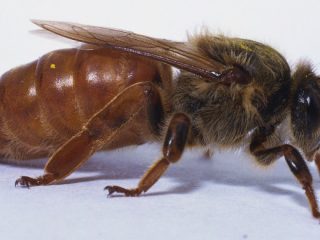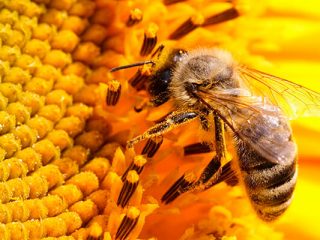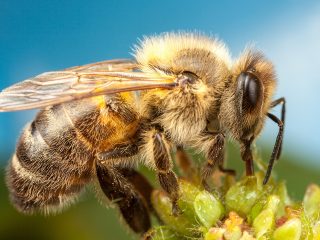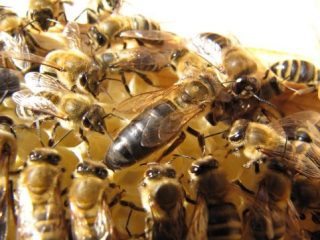Content
The drone is one of the important members of the bee society. Contrary to the established fame of idlers and parasites. Paradoxical as it may sound, the bee colony dies without males. In the bee community, there is not a single unnecessary representative at all. All have their own strictly defined role, and if at least one link falls out, the bee colony suffers.
Who are the bee drones?
A drone is a male bee that emerges from unfertilized eggs. The lifestyle of a bee family is such that a young queen needs to fly around once in her life, that is, to meet with males for fertilization. At first glance, this seems counterintuitive. Indeed, in the hive there are many of their own males. But nature requires the uterus to mate with unrelated males to avoid inbreeding.
But as soon as the uterus flies out of the house, a whole tangle of "native" males immediately rushes after it. This is not an attempt to mate. At this moment, the drones are the bee counterpart of the royal escort and bodyguards. If the greedy beekeeper has removed the "extra" drone combs so that the males that appear do not eat the valuable product, the queen is doomed.
Birds feeding on bees are always on duty near the apiaries. When queen bees leave with an escort, the birds attack and catch bees. Since the same golden bee-eater does not care who it is: a working bee, a queen or a drone, it catches males. The uterus flies several kilometers unharmed to the mating site.
Having met foreign males, the uterus mates with them until the seminal receptacle is filled. The fertilized female must still return home safely. On the way back, she is again accompanied by an escort of "suitors" from her native hive. If there are no other colonies nearby, the uterus flies much farther than males and is forced to return home alone. In such a situation, the birds eat 60% of the queens during the incubation period and capture 100% during the rearing of the chicks. Without a retinue, the "flying around" uterus will inevitably die.
If male brood was unreasonably destroyed, and the retinue is small, the bee-eaters will catch the uterus even on departure. In this case, the bee colony will die if the beekeeper does not add a new fertilized female to them in time.
What does a drone look like?
Drones are easy to spot among the bees. They stand out for their size. But the differences are not only in size, although the male can be 1.8 cm long and weigh 180 mg. The chest is wide and fluffy. Long wings are attached to it. Large, oval abdomen with a rounded posterior end. There is no sting. It is replaced by a genital apparatus.
The male bees have very developed sense organs. In the worker bee, the eyes are relatively small; in the male, they are so large that they touch each other at the back of the head. Antennae are also longer than those of worker bees. The male's proboscis is short, and he cannot feed himself. It is fed by workers. The male also lacks a device for collecting pollen.
What do the drones do
There are two opinions about the male role in bee colonies:
- drones in a bee colony are parasites that are needed only for a few days to fertilize the uterus and consume too much honey;
- drones are useful members of the bee family, performing not only the functions of fertilization and contributing to an increase in honey reserves for the fall.
The first point of view was generally accepted 40 years ago.And now many beekeepers adhere to it. In this regard, the drone brood is mercilessly destroyed, replacing the drone combs with the so-called "dry" - artificial combs for brood working females.
The second point of view is gaining popularity. Especially after it turned out that the male bees in the hives not only eat honey, but also help the workers to ventilate the hive. And ventilation is necessary for the production of honey. Without maintaining the required temperature and humidity, honey will not dry out, but will turn sour.
Also, the presence of males mobilizes the bees to collect honey. Bee colonies, where the brood drone has been completely destroyed, perform poorly during the high season.
Due to the lack of a sufficient number of drones in the family, bees experience anxiety on an instinctive level. Instead of quietly collecting honey and feeding young workers, they begin to clean the hive and build drone combs again. Beekeepers, destroying drone brood, cut out such combs 2-3 times during those 24 days during which males develop in the combs with non-human intervention.
Beekeepers who adhere to the point of view “do not go into the fine natural regulation with dirty hands” observe the construction of drone honeycombs only once a year in spring. And, despite the excellent appetite of the drones, they end up getting more honey from each hive. A bee colony with drone bees works quietly and stores honey. Also, it does not reborn into a tinder family, which can easily happen in the hive where the males were destroyed.
First of all, the tick attacks the drone cells. If you wait for the parasite to lay its eggs and then remove the combs, you can reduce the pest population in the hive. But in order not to exhaust the bee colony, in autumn and spring it is necessary to use other methods of fighting the mite.
Life cycle of drones
From the point of view of sex, the bee drone is an under-female with a haploid set of chromosomes. Drone bees emerge from unfertilized eggs laid by the uterus in a larger cell than usual. This phenomenon occurs due to the interesting mechanism of egg fertilization in bees.
On the flyby, the uterus gains a full seminal receptacle, which is enough for it until the end of its life. But this does not mean that all eggs are automatically fertilized.
The uterus has a special fertilization mechanism that is triggered only when the egg is laid in a small (5.3-5.4 mm) cell. These are sensitive hairs that, when compressed, transmit a signal to the muscles of the sperm pump. When deposited, the abdomen cannot expand normally, the hairs become irritated and spermatozoa that fertilize the egg come from the seminal receptacle.
When laying eggs in a drone cell, such squeezing does not occur, since the size of the "cradle" for the future male is 7-8 mm. As a result, the egg enters the cell unfertilized, and the future male has only the genetic material of the uterus.
After 3 days, larvae emerge from the eggs. The worker bees feed them milk for 6 days. After the "nanny", the cells are sealed with convex lids. In the sealed combs, the larvae turn into pupae, from which, after 15 days, drone bees emerge. Thus, the full development cycle of the drone takes 24 days.
Further, opinions differ. Someone thinks that drone bees live no more than a couple of months, others - that an individual individual lives longer. Only one thing is certain: the bee colony breeds drones from May to the end of summer.
The drone bee reaches sexual maturity on the 11th-12th. After that, he is able to fly out of the hive and visit other people's families.
The meaning of drones in a bee colony
Called drones, bees have become synonymous with the lazy bum, not wanting to lift a finger. But real bee drones not only work to the best of their ability, but also sacrifice themselves for the sake of preserving the colony.
Drone bees do not sit around hives.They fly out and wind around the apiary. They can visit other people's families, where they will be welcome. The more drone bees fly around the apiary, the less chances workers have to become prey for bee-eating birds or hornets.
Likewise, drone bees protect their queen on a flyby. Predators cannot break through the "armor" of males, but they don't need to. They don't care what kind of bees they eat. The surviving drones after the flight return to their native hives and help the workers to maintain a stable microclimate in the hive.
An attentive beekeeper, observing drone bees, can determine the state of the bee colony:
- drones hatching in spring - the colony is preparing for reproduction;
- the appearance of dead drones at the entrance - bees have finished stockpiling and honey can be pumped out;
- wintering drones - the bee colony has problems with the queen and it is necessary to take measures to save the swarm.
Sometimes it happens that of all the families in the apiary, one works very sluggishly and stores little honey. If you look closely, this bee community has very few drones. How males stimulate workers to work actively has not been established. But without drones, the worker bees do not work well. It turns out that the importance of drone bees is much higher than it was commonly thought.
One of these breeds is Carpathian.
Bee drones: questions and answers
When breeding bees, novice beekeepers often have questions about what to do with drones. After all, only 2,000 males are able to eat 25 kg of honey per season. It is a pity to waste a valuable product. But as indicated above, males have a higher social role than it might seem at first glance. And you don't need to regret honey. It will be more expensive to restore a colony that was left without males in the summer, or even buy a new one.
How long does a drone live
The male bee has a short age. It is needed to fertilize the uterus, but it consumes too much food. At the end of summer, the number of flowers with nectar decreases, the bees are preparing for wintering and they do not need extra eaters. The bee colony begins to get rid of individuals that are useless for successful wintering. The drone itself is unable to feed, and the worker bees stop feeding them. Slowly, the bees are pushing the drones to the walls and the taphole. If the male was successfully pushed out, he is no longer allowed back. Sooner or later, the drone dies from hunger or cold.
What to do if there are many drones in the hive
Find the good side of this: you can cut out the combs with the drone brood and get rid of some of the varroa mites.
In fact, the number of drone bees in the hive depends on the size of the colony and the age of the queen. This is not to say that "there should be several hundred or several thousand drones." The colony itself regulates the number of male bees it needs. Usually this is 15% of the total number of individuals in a bee colony.
It has been noticed that with a young queen, the colony raises few drones. If the number of males has exceeded the average, you need to pay attention to the uterus. She is either old or sick and cannot sow eggs on the combs. In this case, the uterus must be replaced, and the bees will cope with the excess number of drones themselves.
How to distinguish a drone
An adult drone is not difficult to distinguish from a worker bee or queen. It is larger and rougher. In the video, the bees get rid of the drones and in comparison it is clearly visible how much the male is larger than the working female.
For an inexperienced beekeeper, it is more difficult to figure out where the drone combs are, where the brood brood is, and where the bees grow their replacement.
Drone brood can be distinguished not only by the size of the cells, but also by the shape of the lids. Since males are much larger than normal females, the drone cells are sealed with convex lids to give more space to the future male. Sometimes the uterus lays unfertilized eggs in normal cells. Drones from such honeycombs will be smaller and more difficult to find among other members of the colony.
Worst of all, if a "humpback brood" appears in mass quantities in the hive. This means that the colony has lost its queen, and it is now replaced by a tinder bee. The tinder is laying eggs incorrectly. It often takes up regular cells. Such combs are also sealed by workers with convex caps. But when a tinderpot appears, the swarm needs to plant a full-fledged female or completely disperse this colony.
Is it possible to determine the breed of bees by the appearance of a drone?
Often, even by the appearance of a working female, it is difficult to determine the breed. It so happens that the breed is visible only by the nature of the bee colony: apathetic, aggressive or calm.
Drones of any breed look about the same. By their appearance, it is difficult to determine which breed they belong to. It doesn't really matter.
If in the apiary all the bee colonies of the same breed and a sufficient number of representatives of the male genus, chances are good that the queen will not fly far and mate with a male of her own breed, but from someone else's hive. In the absence of a sufficient number of drones or the flight of the uterus several kilometers from home, there is no possibility to control its mating. She can generally meet drones from a wild family.
Conclusion
The drone is much more important to the bee colony than was commonly thought. It is impossible to interfere with the life of a bee colony and "improve" its composition by exterminating males, this reduces the productivity of the family.

